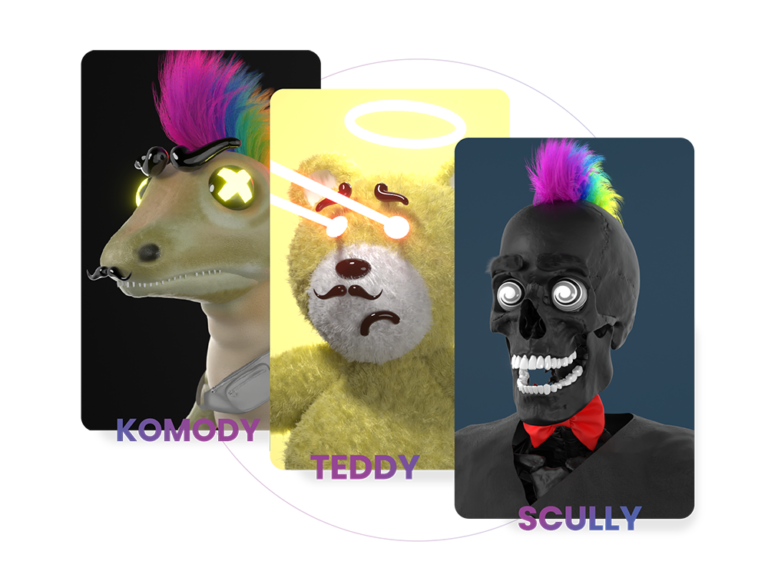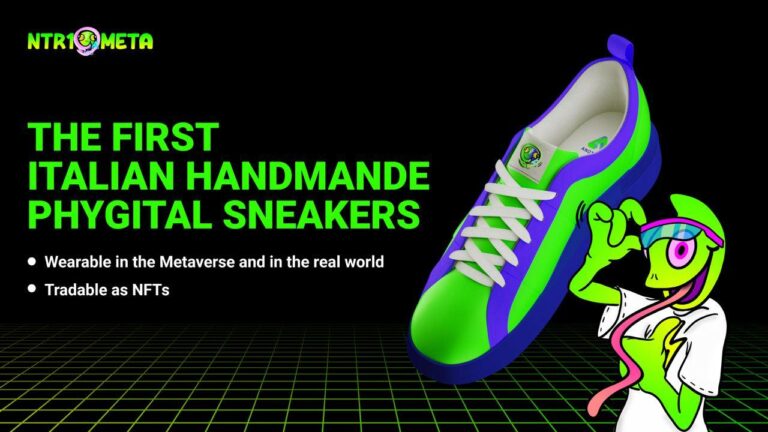It was sixty years ago that Andy Warhol first emblazoned Marilyn Monroe’s face on print for his Marilyn Diptych. At the time, he couldn’t have known that his use of the silkscreen process was going to directly shape a future digital art movement. But that’s exactly what happened.
Current algorithmic NFT collections are directly traceable back to Pop Art, and these collections borrow heavily from the philosophy, and methods of Pop Art’s silkscreen works. At the time they were released, Warhol’s Marilyn Diptych received both substantial panning and praise by critics for many of the same reasons as current algorithmic NFT collections. These parallels can be seen specifically in a few notable areas:
- Use of contemporary techniques
- Image appropriation
- Interplay with pop culture
- Ownership/Membership to a community
Does the Technique Make Art More Valuable?
With silkscreening, a pre-existing image is taken and transferred onto silk in what Warhol referred to as “an assembly-line effect”. In this way, the method of production of the art reflects the assembly-line production of the pop-culture goods which form the backbone of the Pop Art movement. The clearest example of this assembly-line metaphor is found in his works of the ubiquitous Campbell’s Soup cans. But we’ll dig into the soup a bit later.
Warhol was criticized for both taking an image that he didn’t produce (the original image of Marilyn Monroe), and for using a technique which many saw as being technically inferior to painting. To some, there was a perception that there was less talent involved in producing a work through silkscreening than painting a completely original work.
This perception led to the idea that the artistic works were less impactful and relevant than a “purely original” piece of art. Many critics also believed that the silkscreened works couldn’t have the same depth of meaning as unique paintings, considering they were made using an industrial process. Some have argued that it was an impossibility that an industrial process could be in any way “artistic”.
So, the Marilyn Diptych was released a few weeks after her death, and the left panel of the piece features slight variations on a hyper-colourized image. This colourized side features progressively clearer/darker lines and colours which became progressively brighter. The right panel is in black-and-white, with those copies of the image fading away with repetition. In this diptych, the metaphor for life and death can’t be any more clear. It stands as a refutation to the idea that somehow the meaning of a work of art is tied to the perceived skill of the technique used to create it.

It’s important to keep this Warhol lesson in mind, as one of the most common criticisms of these algorithmic NFT collections is the idea that there can’t be meaning inherent in the images because they’re created with help from computer algorithms.
This criticism is simply an extension of the very same arguments first levied against Warhol. The truth of the matter is that meaning is created by the observer of art, and the techniques may inform the way in which the work is interpreted – but it has nothing to do with the amount of meaning (or lack thereof).
Simply put, Andy Warhol used the tools at his disposal to create an impactful artistic work. Algorithmic NFTs are no different. They may be more technologically advanced, but they’re still simply tools that are used by artists to engage and entertain others.
In fact, algorithmic NFTs are in many ways simply a digitized form of the analog silkscreen process. There’s a human hand which sets the entire collection in motion, and guides it. That fact shouldn’t be forgotten or overlooked.
Appropriation vs Appreciation
Pop Art was a reflection of the commodification of existence that sprung up in post-war America. Artists used accessible images from the American consumerist zeitgeist to both make their work relatable and comment on contemporary culture.
Warhol used images like the Campbell’s Soup cans, and Coca-Cola bottles (which he had no copyright or ownership of) to make his art. These companies ended up deciding that the notoriety of Warhol’s work was good for business, so they didn’t pursue legal action against him for copyright infringement. Nevertheless, Warhol was operating in a newly found legal grey area with respect to what constitutes the public domain.

If one takes a look at many current NFT projects, they’ll often see images with superhero costumes or aspects of pop culture not directly owned by the artists themselves. It can be argued that some of the images fall into fair-use.
These images represent objects or ideas that have sprung to life in the public’s consciousness outside of just the works in which they were initially created. As such, some of these images may be seen to habitate a grey area with regard to copyright and fair-use. Having said that, this complex and subtle interplay between art and fair use is far less divisive than it once was.
In today’s world, appropriation/reimagination is much less of a contentious issue, thanks in part to remix culture which came to prominence in the 1980s. Underground hip hop and dance scenes were notorious for their use of sampling which, can be argued, was an auditory equivalent of what Warhol did with images.
Over the decades, the idea of repurposing someone else’s work and transforming it into something new has become far less contentious than it once was. But nevertheless, it’s still a common criticism cited by those still on the other side of the NFT collection debate. With certain NFT collections, the interplay between copyrighted content and content that’s become adopted by the public domain continues to evolve.
Pop Culture and NFTs
Pop culture lives in the minds of the masses. It’s not stagnant, but rather changes and shifts over time. NFT collections seek to capture the popular imagination, and not only reflect contemporary attitudes, but also direct them in a simple, coherent way. This is the same process that makes memes so powerful. Warhol’s works are very relevant in this conversation.
Warhol was a master of being memetic, especially when one considers the enduring legacy of Marilyn Monroe in the popular imagination. Warhol’s interpretations of her image have become inseparable from the idea of Marilyn Monroe the pop culture icon. With current technology, this memeification of culture happens more efficiently than ever before. So it only stands to reason that NFT collections have become a part of this process and are highly memetic in themselves. This is in large part why they’ve exploded in popularity over the past year.
We also live in a world with many different notions of what defines pop culture. There is the usual “mainstream” culture which includes movies/shows on streaming services, as well as conversations on social media. There’s also aspects of culture which are widely shared, but aren’t quite at the nebulous cusp of what’s considered “pop culture”.
For instance, take a collection like Style of Skull on the Curate multichain NFT Platform. This collection nods to skull/skeleton iconography around the world. From the iconic sugar skulls of Mexico, to the macabre Skull Catacombs of Paris, people have a natural fascination with mortality-related imagery. This fascination is explored in yet another collection on Curate, literally called “Memento Mori” (remember death). Distilling a widely-held fascination with death imagery into algorithmic NFT collections is a fitting way to speak both to the historic fascination with skulls, but also reimagining them.

Another example of pop culture’s influence on NFT collections is the infamous CryptoPunk collection on OpenSea. The style of these Punks is reminiscent of the 24×24 pixel art from computer games from the early 1990’s. Anyone who played Advanced Dungeons and Dragons circa 1988-1992 likely feels quite nostalgic when seeing these images. Stylistically, these pixelated portraits capture the feel of character avatars from those (and other) games.
The net effect is that the retro art stirs up nostalgic memories of hours spent playing these different games. So from this, we can see that the breakdown of CryptoPunks popularity is simple: The NFT art is rooted in a cultural object, and that elicits nostalgic feelings. On top of that, the sheer range of 10,000 different characters means that some people will inevitably form a personal connection with at least ONE of the images.

In a similar way, Warhol chose the image of Marilyn Monroe for his diptych. She was a beloved icon, though troubled. The viewer’s attachment to Monroe is crucial to feeling the emotional effect of the diptych which explores the duality of her life and death. In retrospect, it was an absolutely genius decision to use Monroe’s picture, as Marilyn Monroe continues to be memefied to this day. Her image and story are often summed up within singular, well-known pictures and posters which still adorn the walls of many across the world.
There is one fundamental difference, though, between Warhol’s Pop Art works, and many of the popular algorithmic NFT collections. Warhol took existing pop culture items, such as Campbell’s Soup cans and directly reused those to convey familiarity. Algorithmic NFT collections typically aren’t quite as on the nose as Warhol’s works.
Instead, there might be occasional cultural references found within specific images – but it’s these images themselves which are breaking into the public’s consciousness. Consider, for instance, the BAYC collection. All controversy aside, they have certainly captured the attention of people en masse around the world. The Apes have effectively created a pop culture icon(s), as much as they may or may not have borrowed aspects of the collection from elsewhere.

Ownership as Belonging
The last way I’ll explore that algorithmic NFT collections tie to Warhol and Pop Art, is in the meaning derived from owning a work or a print. Of course, this is more of a general rule when it comes to any piece of culture which can be owned…but it’s just as true for Pop Art as any other form of art.
Through the act of owning a cultural artifact (be it an mp3, a painting, or a book) meaning and identity can be formed. Declaring, or showcasing, that a person owns a particular bit of art is a statement about a person’s interests, perspectives, and outlook on the world. This exact same mechanism is found with algorithmic NFT collections.
A person may buy simply to try and flip the work for money – but a person may also buy a work because it speaks to their interests, the way they see the world, or a bit of nostalgia they like to keep close. These collections appeal to a buyer’s identity and give a commonality to share with others around the world who’ve also bought art from the same collection.
It’s now been established that algorithmic NFTs fit completely within the canon of contemporary art history. While these NFTs may be the subject of criticism from time-to-time, they are just as notable and important as any other art movement which has come before. When thinking and talking about algorithmic NFT collections, it’s very helpful to view them through the lens of Pop Art and the silkscreen process.
So, be sure to keep Warhol in mind next time you scroll through the many collections out there, searching for the exact jpeg from the precise collection which truly speaks to your sense of self.
Want more? Connect with NFT Plazas
Join the Weekly Newsletter
Join our Discord
Follow us on Twitter
Like us on Facebook
Follow us on Instagram
*All investment/financial opinions expressed by NFT Plazas are from the personal research and experience of our site moderators and are intended as educational material only. Individuals are required to fully research any product prior to making any kind of investment.

Regan has a background in Cultural Anthropology. He works for the NFT Platform Curate where he does content, marketing and artist promotion.






